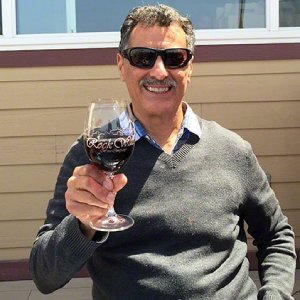We explored the Dry Creek Wine region this past weekend and for us it’s always like being there for the first time. The beauty and splendor of this area never ceases to astonish us. Exploring the Dry Creek Valley is fun and easy to do. The Dry Creek Valley is an easy drive from the San Francisco Golden Gate Bridge. Drive north on Highway 101 for 65 miles and take the Dry Creek Exit and head west. There are two roads that follow the Dry Creek Valley. The main road is Dry Creek Road and on the opposite side and west of the creek (Dry Creek) is West Dry Creek Road. Most of the 60 or more wineries can be found on these two roads. We highly recommend a getaway to Dry Creek Valley. Put it on your calendar and book your lodging in the nearby town of Healdsburg where you will also find gourmet restaurants and high-end shopping.

On this weekend we are interested in learning more about the wineries in the Dry Creek Valley that are practicing sustainable farming. Sustainable farming is occurring more and more in wine country but the Dry Creek area has a significant number of wineries that have been doing this for many years. The first winery we visited was Montemaggiore Winery a very small winery tucked back in the hills of the Dry Creek Valley. As you drive a couple of miles up the hill, it is surprising to find many homes and small vineyards. If you want to visit this one-of-a-kind winery, you will need an appointment to arrange a visit with Lisa and Vince Ciolino. Lisa is the winemaker and Vince is the vineyard manager and usually the tour guide. The Ciolinos produce about 1000 cases of wine annually and the primary focus is on Syrah. The wines are always delicious and well regarded in Sonoma County. This week will be an interesting week for the winery. Vince has been farming the land biodynamically for four years and this week the officials from the Demeter Association will visit to determine if the winery is ready for certification. Demeter is the only body that can certify a winery as biodynamic.
On our visit, Vince explains to us one of the most notable aspects or requirements of biodynamic farming. A female cow horn is filled with manure and buried in the Fall. Months later, the horns are dug up and the composted manure is emptied into 60 gallons of water. After a certain amount of stirring both clockwise and counterclockwise, the water is now filled with bacteria and other microorganisms from the compost. When it is time this water is sprayed in the vineyards in droplet form. When this fascinating solution of microorganisms lands then on the soil, the microorganisms proprogate and spread their nourishment throughout the vineyards.

Does this make the wine better? Nobody has really ever answered that question for me with an emphatic “Yes.” Yet, all seem to agree that biodynamic farming is the right thing to do for the earth and for the good of all. Nothing is wasted and all materials are returned in some form back to the farm. The fact remains for us that the Montemaggiore wines are among our favorites so much so that a few years back we joined the Montemaggiore wine club. With two other couples we make the trip twice a year to pick up our shipment of wine from Lisa and Vince. This time it is a half case of 2006 Syrah. The 2005 was spectatacular and we are expecting this vintage to be just as good.
We will follow up with you to let you know how the certification went at Montemaggiore as well as tell you about our visit to Quivira Vineyards another biodynamic winery.

